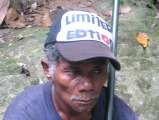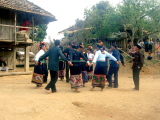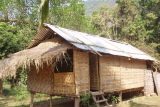HLK 2010

The Second Conference in Linguistics within the Birgit Rausing Language Program
HUMANITIES OF THE LESSER-KNOWN
New directions in the description, documentation and typology of endangered languages and musics
Centre for Languages and Literature, Lund University, Sweden
September 10-11, 2010
This conference will bring together leading international expertise in the fields of language documentation and description, linguistic typology, and musicology. It draws its inspiration from the idea that the field of humanities is concerned with humankind in all its cultural and linguistic richness, and that the study of lesser-known language settings is crucial to our understanding of the true scope of cross-cultural constraints and diversity in language and thought.
Until recently, documentation and description of lesser-known and endangered languages largely amounted to studying formal grammar. However, a number of theoretical, methodological and technical advances have transformed the field researcher’s agenda and now allow for detailed exploration and comparison of a wider set of aspects of language and culture. The general aim of the conference is to focus on some such fields of investigation and to find ways of integrating them to a more comprehensive and coherent program of description and documentation. Four fields will form general conference themes:
- Grammar. The formal architecture of language is a domain with a long unbroken tradition of typological study, and while it has been described in terms of radically different approaches, the methodology is well established and the generalizations are fairly well understood. Due to a steadily widening empirical base, in terms of languages covered and quality of recorded data, it is becoming realistically possible to address new issues which have hitherto not been studied. We welcome papers which focus on new avenues of research in grammatical phenomena, in particular (but not exclusively) the interaction between grammar and other aspects of human communication.
- Prosody. Prosody has a dual nature in that, on the one hand, it is determined by the physiology of humans and, on the other hand, its use is part of the linguistic structure, interacting with other components of the linguistic system. Today’s theoretical models for description of prosody are still grounded in a limited number of languages. Also, in most accounts, prosody is considered an isolated module of the language. Today’s growing cross-disciplinary cooperation is a step towards more extensive description of human communication and also towards better knowledge about each of the components of the linguistic structure. The growing body of field-based work calls for new and refined methods for collecting, describing and documenting prosodic data.
- Semantics and cognition. The cross-cultural exploration of meaning and thought has intensified in recent decades, not least with the establishment of the discipline of semantic (or lexical) typology. Elicitation methods developed for cross-cultural application have encouraged detailed language-specific probing and cross-linguistic comparison and theorization on a grand scale. Research typically targets domains which are central to human existence and thus relevant to every culture and language community, like anatomy, kinship, space and basic event types. Like traditional structural typology, this work emphasizes the necessity of studying lesser-known language settings in order to address the true scope of constraints and variation in human languages. Still, broad-based application of semantics and cognition studies in language description and documentation is still in its infancy.
- Music. Research in ethnomusicology has for several decades focused on studies of musical expressions and their uses and functions in the contexts of the communities where they exist. This has resulted in increased knowledge and a large quantity of material in the form of collections and local studies. In many cases the search for meta-theories has led researchers to apply linguistic theories to the material, including grammar, prosody, semantics and cognition. There is thus a certain common ground between ethnomusicology and linguistics. At the same time this development has brought attention to the necessity of further investigating the potential of such inter-disciplinary work and also the need of searching for yet unexplored possibilities.




